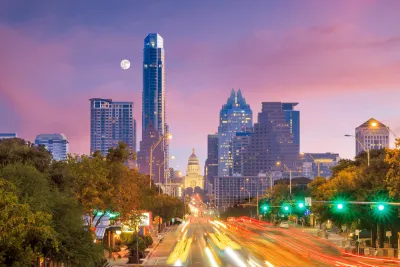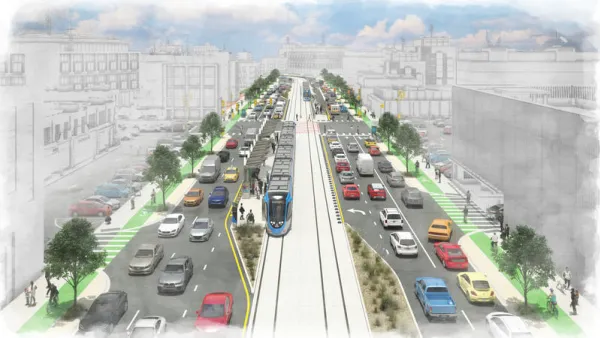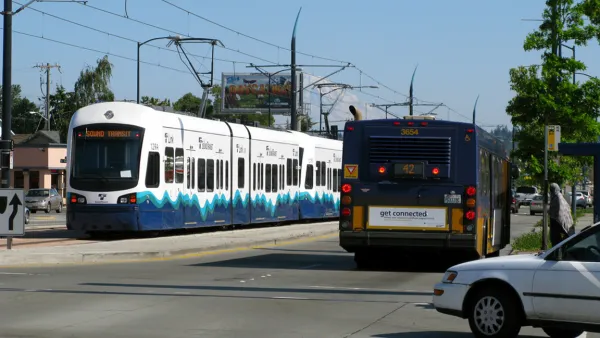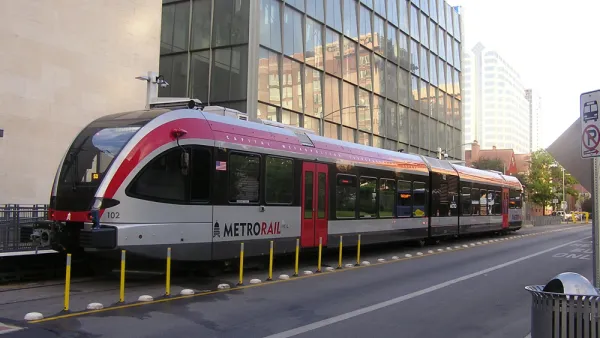Project Connect promises to prioritize equity and inclusion with $300 million dedicated to anti-displacement efforts.

Austin's newly approved $7 billion transit expansion plan boasts an ambitious set of goals that, according to Mayor Steve Adler, meets "so many long-held needs." The project will expand bus and electric bike share services, build a transit tunnel, and install almost ten miles of commuter rail.
While efficient and popular with transportation planners, light rail has a darker connotation for many community activists like Susana Almanza. Almanza, who serves as director of environmental justice organization PODER, worries about the effects of the new transit infrastructure on local communities, citing a history of displacement that frequently follows new rail lines. As transit-adjacency transforms from an undesirable reality to a highly valued urban amenity, low-income communities near rail lines become displaced by luxury housing developments aimed at upwardly mobile workers. An NRDC study of California's major urban areas found that rent for a two-bedroom apartment within a half-mile of a transit stop averaged more than $3,000, well above affordability for most transit-dependent families.
Austin's leaders are addressing these concerns head-on with an equity plan and dedicated budget aimed at helping low-income residents stay in their homes and reducing the negative impacts of rail construction. The budget includes rent subsidies and homeowner assistance to help the communities that rely on transit the most and offset the neighborhood change inevitably brought by new transit infrastructure. As part of the equity plan, the city plans to create a neighborhood-level equity assessment tool and community advisory committee that will monitor performance progress once projects are underway.
FULL STORY: The next challenge for Austin’s transit plan: Delivering on its equity pledge

National Parks Layoffs Will Cause Communities to Lose Billions
Thousands of essential park workers were laid off this week, just before the busy spring break season.

Retro-silient?: America’s First “Eco-burb,” The Woodlands Turns 50
A master-planned community north of Houston offers lessons on green infrastructure and resilient design, but falls short of its founder’s lofty affordability and walkability goals.

Delivering for America Plan Will Downgrade Mail Service in at Least 49.5 Percent of Zip Codes
Republican and Democrat lawmakers criticize the plan for its disproportionate negative impact on rural communities.

Test News Post 1
This is a summary

Test News Headline 46
Test for the image on the front page.

Balancing Bombs and Butterflies: How the National Guard Protects a Rare Species
The National Guard at Fort Indiantown Gap uses GIS technology and land management strategies to balance military training with conservation efforts, ensuring the survival of the rare eastern regal fritillary butterfly.
Urban Design for Planners 1: Software Tools
This six-course series explores essential urban design concepts using open source software and equips planners with the tools they need to participate fully in the urban design process.
Planning for Universal Design
Learn the tools for implementing Universal Design in planning regulations.
EMC Planning Group, Inc.
Planetizen
Planetizen
Mpact (formerly Rail~Volution)
Great Falls Development Authority, Inc.
HUDs Office of Policy Development and Research
NYU Wagner Graduate School of Public Service





























